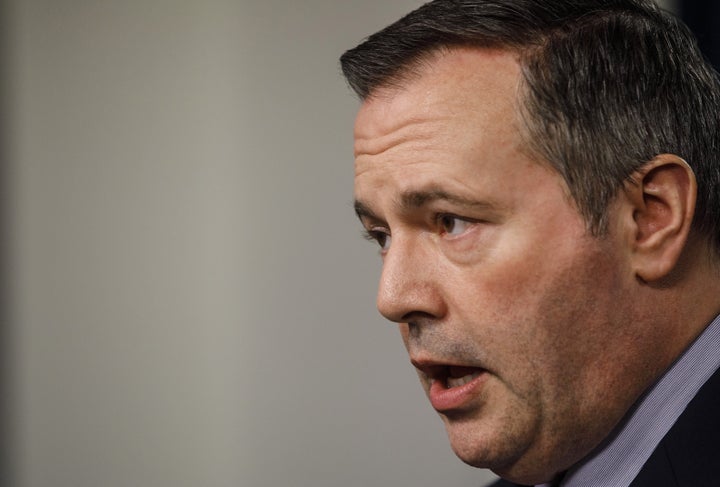
Few people can pivot to the discussion of federal equalization payments in the middle of a pandemic like Alberta Premier Jason Kenney can.
Last week, when announcing his province’s donation of hundreds of thousands of pieces of personal protective equipment (PPE) to Ontario, Quebec, and B.C. in their fight against the COVID-19 pandemic, Kenney was asked if he expected anything in return.
“I obviously hope that our fellow Canadians will recognize in this contribution, the generous role that Albertans have always played across the country,” Kenney said.
“This is one practical expression of that in a time of need, but we Albertans contribute $20 billion more to the rest of Canada than we get back in benefits every year. That helps to fund their hospital systems, their health-care systems, their schools.”
WATCH: Alberta declares public health emergency. Story continues below.
It’s a familiar drum beat out of the province, and an example of Kenney’s Alberta-first communications strategy throughout this crisis.
From donating PPE to other provinces, to publicly questioning the authority of Canada’s chief medical officer, Kenney has walked a fine line between unity and confrontation during the crisis.
His government has been heralded for supporting other provinces in need, and for leading the country in per capita testing and contract tracing of the virus. But he’s also had to deal with a controversial health minister accused of bullying doctors and his own comments that put into doubt the authority of Canada’s top doctor.
All the while, COVID-19 continues to steadily grow in Alberta, where there are now more confirmed cases than British Columbia, Saskatchewan, the Yukon and Northwest Territories combined — though Alberta does test more per capita.
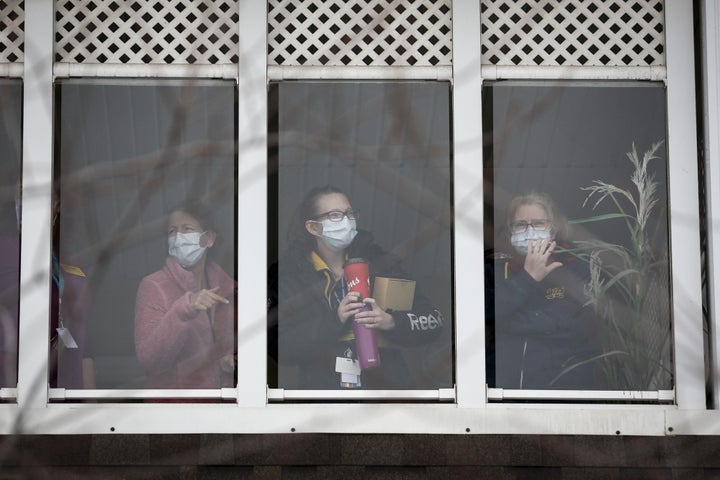
As of April 21, the province has recorded 3,095 confirmed cases and 61 deaths, the largest recent spike attributed to outbreaks in the meat-packing industry.
Meanwhile, on Monday, the benchmark price of Canada Natural Select oil dropped into the negative as part of the largest single-day price drop in history.
The province — and its leader — are far from out of the woods of this crisis yet.
Lend a little PPE
The move to donate PPE to other provinces was a smart one by Kenney, says Mount Royal University associate professor of public policy Lori Williams, and a result of pre-planning and logistical coordination on the province’s part.
“That was something that was seen by the entire country as a hopeful sign, something that suggested that we are in this together and that there are ways of working this out by coordinating the places that are being hit with places that have not yet hit their peaks,” she said.
But there was also some skepticism from within Alberta that the province could afford to give away that equipment.
Workers from other high-risk jobs outside the direct health-care system argued they needed the PPE.
“We are hearing numerous concerns about a shortage of front-line supplies of lifesaving equipment right here in Alberta,” NDP health critic David Shepherd said in a statement. “We have heard from doctors, nurses, municipal leaders and those working with Albertans with disabilities that the necessary supplies they need to do their jobs safely have not been confirmed.”
The Alberta Union of Provincial Employees (AUPE) released a statement over the weekend criticizing “shoddy” masks deployed to workers across the province that could put workers and patients at risk. Health-care and front-line workers have spoken out on social media about the problematic masks.
One Alberta nurse says that despite fears early in the pandemic that they would run out, she’s been assured they have enough stock available. But she still worries what will happen if Alberta faces a sudden spike in illness.
“I agree that we must help our neighbors. If we help Ontario and Quebec now, I have faith that they will help my province later,” she wrote in an email to HuffPost. “This isn’t impersonal like building a pipeline, or disputing a transfer payment, this is personal. This is our lives, and for the first time, and it appears that our politicians are aware of that.”
On Monday, both Kenney and Health Minister Tyler Shandro attended the daily COVID-19 briefing to assure people the province’s supply was sound, and that Alberta workers were receiving the highest quality PPE possible.
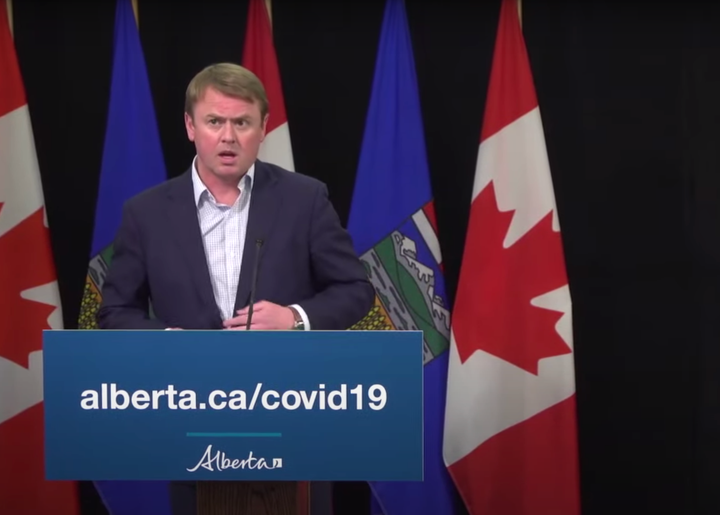
“All of our PPE meets the required safety standards and all products are tested prior to being ordered and then are inspected again before they are supplied by AHS to our sites,” Shandro said.
According to the government, Alberta has anywhere from 30 to 60 days’ worth of approved masks on-hand at a time.
Tell everyone
The government spent nearly $20,000 on ads directed at other provinces promoting the goodwill of the PPE donation. Facebook ad-spending data shows that Alberta spent 20 times more on the out-of-province ad campaign promoting the donation than any other advertisement over the course of the COVID-19 pandemic, including those promoting testing and social distancing measures in the province.
“We are all in this together,” the ads read. “Alberta currently has the ability to contribute and can safely send N95 masks, procedural masks, gloves and goggles to provinces that need it most.”
Fifty per cent of one version of the ad’s traffic was directed to Ontario.
Williams says she’s not surprised by the ads and Kenney’s talk of equalization even in the midst of the pandemic, particularly considering the unique economic hardship the province faces in the wake of the oil crash.
“It’s not to say that Albertans aren’t interested in getting a little bit more out of confederation in a time that they’re really struggling,” she said.
But Williams said the Kenney government has gone too far in two key areas that could jeopardize the goodwill the province has cultivated, and even put people at risk.
“Unfortunately he’s been stepping on the positive message in a number of ways,” she said.
Williams pointed to key missteps in the handling of Shandro’s controversial and aggressive interactions with members of the health-care community, and Kenney’s brash criticism and questioning of Canada’s chief public health officer Dr. Theresa Tam.
“For reasons that make no sense to anyone, the Alberta government has decided to put themselves in opposition to, to the heroes of the current crisis, people that everybody appreciates so much,” she said.
How do you solve a problem like Tyler Shandro?
Kenney has served largely as Alberta’s de facto health minister, as Shandro became embroiled in several controversies
The minister reportedly visited the home of a doctor who posted a critical meme of him on Facebook. According to the doctor, Shandro “yelled” and “screamed” at him to take it down. Other doctors have reported online and in-person harassment from Shandro and his team, who reportedly used Alberta Health Services databases to find phone numbers to call.
“For reasons that make no sense to anyone, the Alberta government has decided to put themselves in opposition to, to the heroes of the current crisis, people that everybody appreciates so much.”
- Mount Royal University associate professor of public policy Lori Williams
“I fully recognize the enormity of what our province and country is going through right now, and regret that this episode has become a distraction. For that, I am sincerely sorry. I am determined to continue tirelessly performing my role during this pandemic, and pledge to not get distracted by social media attacks during this extremely serious time,” Shandro said in a statement following the meme incident.
Shandro has also faced criticism for holding stakes in a private health-care company run by his wife, one which brokers supplementary health insurance through private providers, while his department cut health care in the province.
As a result, Shandro makes rare appearances at daily briefings. But more often than not, the premier accompanies chief public health officer Dr. Deena Hinshaw and various other cabinet members in the now-empty press room for the daily COVID-19 update. Kenney almost always speaks first, often at length about policy updates and what Alberta is doing right but also about the science, the numbers and the health impacts.
For 54 minutes on April 8, Kenney rolled up his sleeves, and set out to explain a series of graphs on the province’s COVID-19 modelling and projections to Albertans. The career politician discussed ventilator capacity, epidemic curves, projected deaths and more, for nearly an hour.
Hinshaw, a key architect in the modelling and the province’s health approach to the pandemic, stood off to the side and only took the podium after Kenney had done the initial walk-through of the data.
Kenney’s constant presence has drawn ire from some Albertans, who’ve jokingly referred to him as the “opening act” to Hinshaw’s main event.
However, it’s his silence on the Shandro situation that’s drawn the majority of criticism. Despite the controversy, Shandro remains health minister, something Williams says should not be the case.
“If [Kenney] were wise, he would move Shandro into another portfolio as early as possible,” she said. “But that means you’re admitting you’re wrong so he looks like he’s a bit reluctant to do that.”
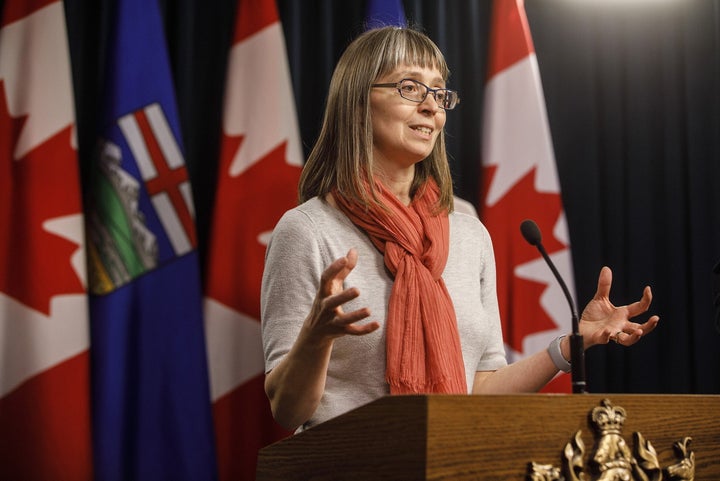
Williams said Shandro was largely seen as one of Kenney’s most promising and talented young cabinet ministers following the UCP’s election last year. She says Kenney stepping forward into the role is a way of shifting focus from the now-controversial health minister.
“In Jason Kenney’s mind at least it’s initially being run by himself,” she said. “It’s always been Jason Kenney, since this crisis started.”
Tam time
But the Shandro situation is not Kenney’s only misstep, according to Williams.
During an appearance on CBC’s Power and Politics last week, Kenney criticized Tam, suggesting she was repeating talking points used in China during the early days of the pandemic about there being “no evidence of human-to-human transmission.”

On Tuesday, the chief public health officer pushed back against Kenney’s comments.
“[We’ve] had incredible collaboration with the chief medical officers, including, of course, the chief medical officer in Alberta, and we work really well together and all of us are trying very hard,” Tam said.
When asked Thursday about the premier’s critiques of Tam, Hinshaw also asserted her own confidence in Canada’s public health officials.
“I have a lot of respect for all of my colleagues across the country and the work we do as a collaborative,” she said.
“[We’ve] had incredible collaboration with the chief medical officers, including, of course, the chief medical officer in Alberta, and we work really well together and all of us are trying very hard.”
- Dr. Theresa Tam, on Alberta Premier Jason Kenney's comments
Still, Kenney’s repeatedly said he may order his province to take steps without Health Canada’s permission, such as not waiting for approval on medications, vaccines or tests for COVID-19 before rolling them out in Alberta if other “peer” countries, such as Australia, the U.S. and members of the European Union, have approved them.
Williams warned Kenney’s “inexplicable” comments could put people in danger of being exposed to the virus because they’ll stop listening to health officials if Kenney says to.
“It’s going to be essential that we have confidence in our health-care leaders. And so, to criticize in that way actually undermines their capacity to encourage people to do the kind of isolation and protection that needs to be done to keep this pandemic at bay,” she said.
Looking ahead
Kenney did score a win Friday when the federal Liberals announced $1.7 billion to help clean up “orphaned wells” in oil-producing provinces.
“This is critical to getting thousands of people in the energy sector back to work immediately,” Kenney said on Twitter following the announcement.
Kenney has long-advocated for federal support in the oil and gas industry, even before the crisis. There are over 6,100 abandoned oil wells in Alberta alone, and on Friday Kenney said the cash from Trudeau will save thousands of jobs.
But the fight against COVID-19 and for Alberta’s image continues to be an uphill one, even in his own province.
On Monday, Kenney again acknowledged he hopes more energy support is coming from the Trudeau government.
And while neighbouring B.C. asserted Friday they were, in fact, flattening the curve, the growth rate of Alberta cases is still modestly rising. There’s also been an uptick in problematic outbreaks in and around Calgary, including those at long-term care homes and meat-packing facilities. One plant, operated by Cargill near High River, Alta., has seen nearly 500 confirmed cases in the past week. The province also confirmed its first outbreak at an oilsands work camp last week, and workers travelling from that camp have brought cases into B.C..
To throw salt in the wound, oil prices dropped to historic negative lows Monday, with many producers, including those in Alberta, literally paying buyers to take it away.
And throughout this crisis, Kenney’s approval ratings have tumbled as other premiers, like Ontario’s Doug Ford, have soared in the polls.
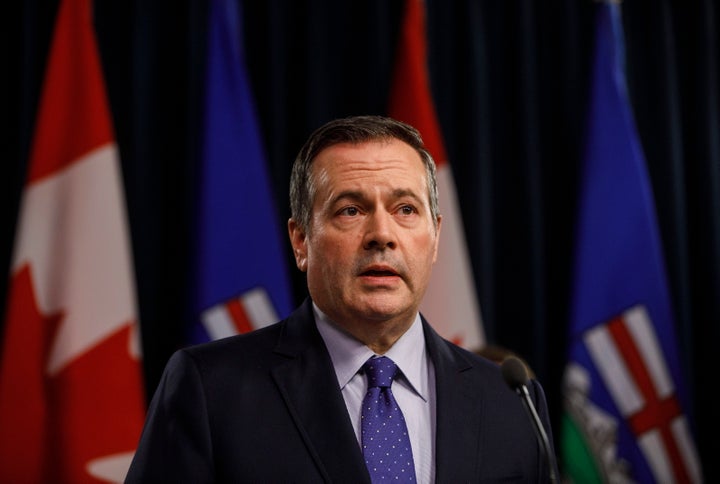
A poll by Research Co. and Glacier Media found 54 per cent of those asked think NDP Leader Rachel Notley would do a better job handling the crisis, while only 29 per cent say they prefer Kenney’s approach.
Alberta was the only major province with declining approval ratings for its COVID-19 performance, with a satisfaction rating of 57 per cent according to the poll — the lowest in the country.
Williams said it’s too late to deal with the Shandro situation and Kenney’s comments about Tam, but she hopes the province course-corrects going forward.
“I’m sure some damage has been done,” she said.
“Hopefully everybody learns from both the damage done to Kenney and his agenda and the damage that it could potentially do to the confidence in health policy leaders in the country.”
“Hopefully they’ll learn from that mistake and avoid that in future.”
Also on HuffPost: